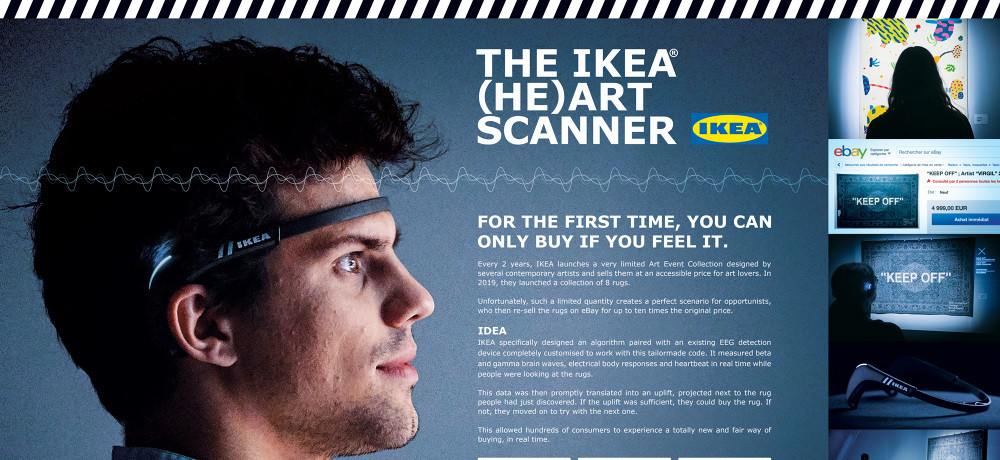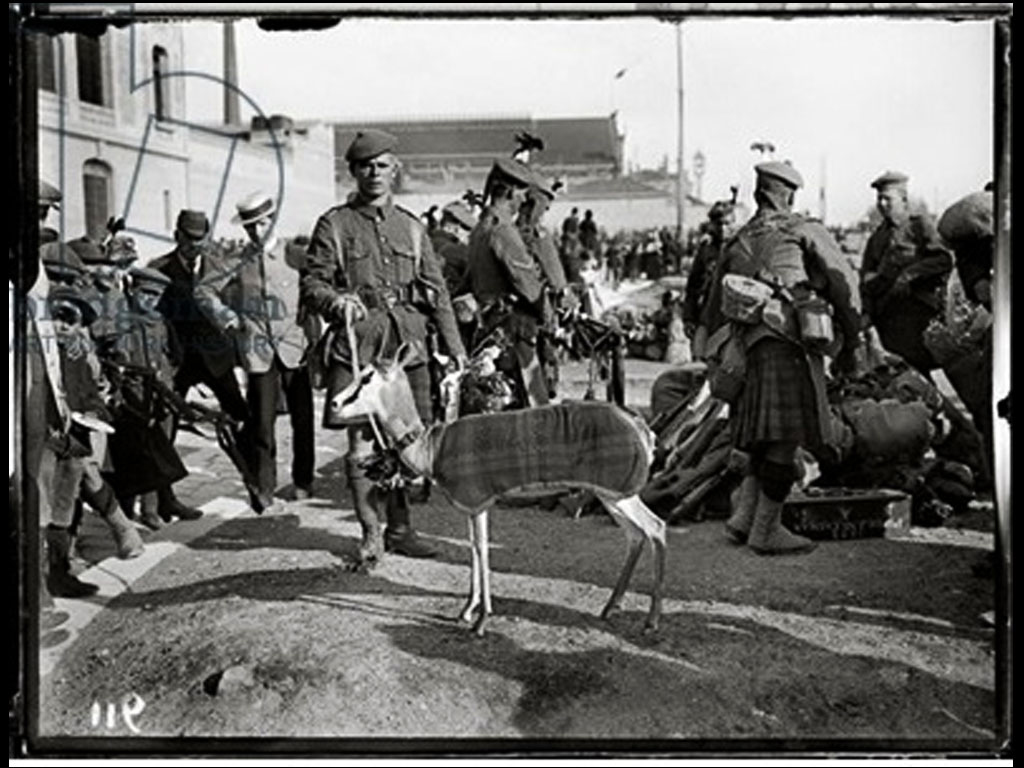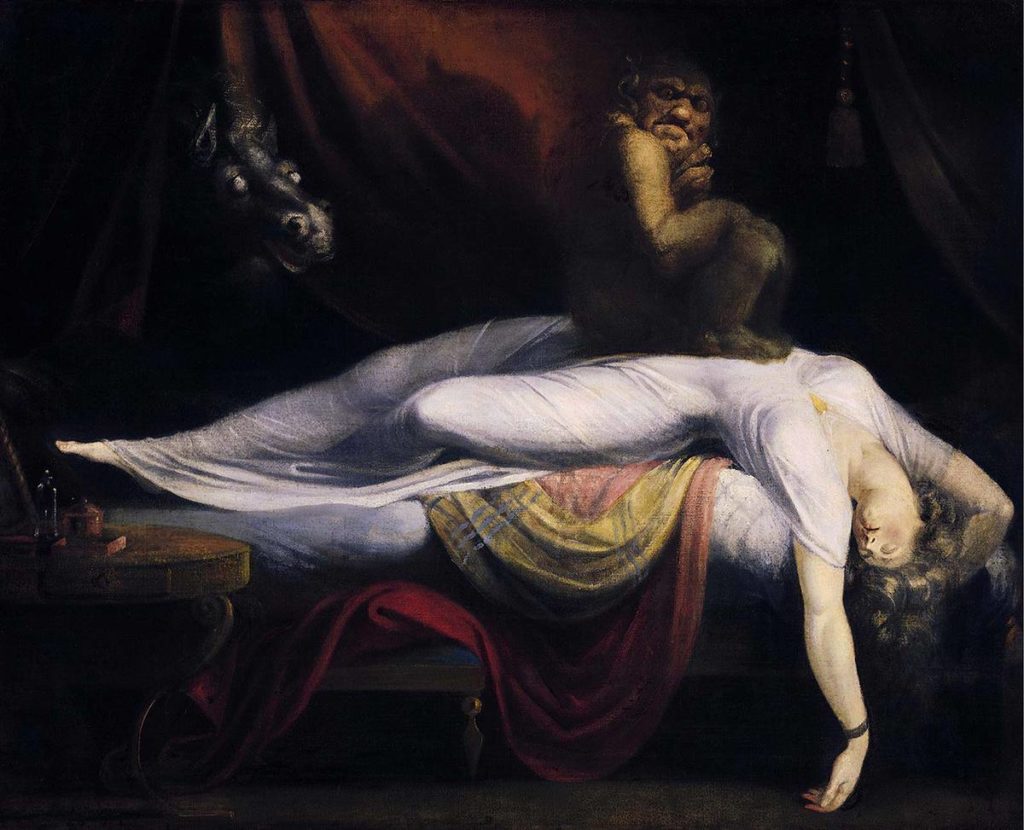Medical imaging technology is being used outside its usual context, incorporated not just to artistic but also commercial research. The (HE)ART SCANNER developed by Ikea Company illustrates how neuro-marketing is going astray—using neuroscience to decipher what goes on inside the consumer’s brain.
Since 2015, the famous commercial franchise Ikea has established partnerships with artists to conceive original collections, the Ikea Art Events. In 2019, they designed rugs with original patterns made by eight creators: Virgil Abloh, the duo Chiaozza, Supakitch, Craig Green, Noah Lyon, Misaki Kawai, Filip Pagowski and Seulgi Lee. These limited edition yet affordable pieces—priced from 170 to 500 €—are snatched from the showroom to end up on reseller sites. On eBay, Virgil Abloh’s “Keep Off” rug can be found for as much as 1400 €, well above the original 300 € price tag, or Craig Green’s rug which runs at 400 €, twice the original price. To limit this seepage into the black market, the company developed the (He)art scanner together with Ogilvy & Social Lab, an agency in Belgium, and then tested the device at the Ikea store in Anderlecht. Using electroencephalogram headsets, the device makes it possible to evaluate how much a potential buyer likes something, based on their emotional activity when looking at the rugs. The principle? “You can only buy if you feel it”. Peaks in cerebral activity translate into a high interest score: the test to pass if you want the right to leave with a collection rug under your arm.
Although the franchise says it hopes the Art Events will instill a more accessible and affordable art market, this selection criteria is particularly elitist. In their press releases, they say it allows “real art-lovers” to leave with one of these limited edition rugs. What does it mean to be “neuro-compatible” with an artwork? Does it mean having previous knowledge of art in order to pass the (HE)ART SCANNER test? In his book Beauty in the Brain (2016), French neurobiologist Jean-Pierre Changeux attempts to answer this question: Why are we affected while admiring this or that painting, listening to this or that music? Backed up by sociological research, he explains that artistic sensitivity is primarily the result of social construction. The brain’s synapses develop at a rhythm of 10 million per second from birth until adolescence, a pivotal period in which cultural circuits and artistic sensitivity is formed, unique to each person and depending on our interactions with the environment. This is proof that “beauty is in the eye of the beholder”, as the English writer Oscar Wilde once put it. Yet if an esthetic eye is socially predetermined, it is profoundly discriminatory to judge an individual’s legitimacy to buy a work of art based on this eye. Such a mode of selection, which grants a right to buy based on physiological criteria, goes against consumer rights, not to mention bio-ethical ones, by submitting clients to an intimate medical test, one that probes their brain, as a condition for buying. Plus, if a client discovers they are “neuro-compatible” with an artwork, will they not feel obliged to acquire it? The procedure is tantamount to the manipulation denounced by French information and communication scientists Didier Courbet and Denis Benoit in their article “Neuroscience in Service of Commercial Communication: Manipulation and Ethics. A Critique of Neuromarketing” (« Neurosciences au service de la communication commerciale : manipulation et éthique. Une critique du neuromarketting », Etudes de communication 2013/1, n°40).
If probing a client’s brain to garner a sustainable sale raises issues, using neuroscience to evaluate adherence to artistic creation borders on the much vaster territory of pluridisciplinary research, as Jean-Pierre Changeux’s introduces in his book that calls for a “neuroscience of art”.
The article “What Physiological Changes and Cerebral Traces Tell Us about Adhesion to Fiction During Theater-Watching?” published in 2014 in the journal Frontiers in Human Neurosciences, reproduces the protocol and results of an experiment conducted by the Laboratoire d’Imagerie et Neurosciences Cognitives du Centre National de la Recherche Scientifique de la Faculté de Médecine de l’Université de Strasbourg and l’Equipe de Recherches Théâtrales et Cinématographiques de l’Université Paris Ouest Nanterre La Défense. The experiment turned to neuroscience in order to ascertain whether one could understand the mechanisms of spectator adhesion to a work of fiction. This process was studied by observing heart and brain reactions with the help of electrocardiograms and medical imagining, and by comparing the results of individual interviews administered to subjects by questionnaire. In practice, an actor performed live for fifteen minutes. He started to perform—a monologue from the text Onysos le furieux by French writer Laurent Gaudé – in the same room as the medical resonance imaging machines while participants were prepared (equipped with electrocardiogram electrodes, earphones and projection glasses). He then continued his tirade in an adjacent room, broadcasted live (image and sound) through the participant’s earphones and glasses. The machine noise was integrated as a contextual element to the theater piece and the stage where the actor stood was projected before the subjects’ eyes as an extension of their machine. The entire experiment was organized so there would be no interruption, no sense of discontinuity for the participants. After the performance, the participants were removed from the machines and interviewed individually in two rounds. The experiment protocol borrowed as much from medical research as from social science research, which is characterized by its interviewing methodology and combining quantitative (statistics-based) and qualitative surveys.
This experiment is especially interesting in that it establishes a relationship between artists (directors, actors, art students) and scientists, and involves a scientific and medical protocol in an artistic process: the monologue was staged entirely to meet the needs of the experiment. This can elicit other problems with regard to methodology, but it stems from a desire to broaden the scope and tools of research. When it comes to the medical field, art and fiction are rooted primarily in art-therapy. Similarly, when artists use science and technology, it is often as tools rather than objects in their own right. Here, art and fiction become the very object of scientific research, and creating a dialogue between art and neuroscience allows both to evolve in reciprocity.
Translation by Maya Dalinsky















